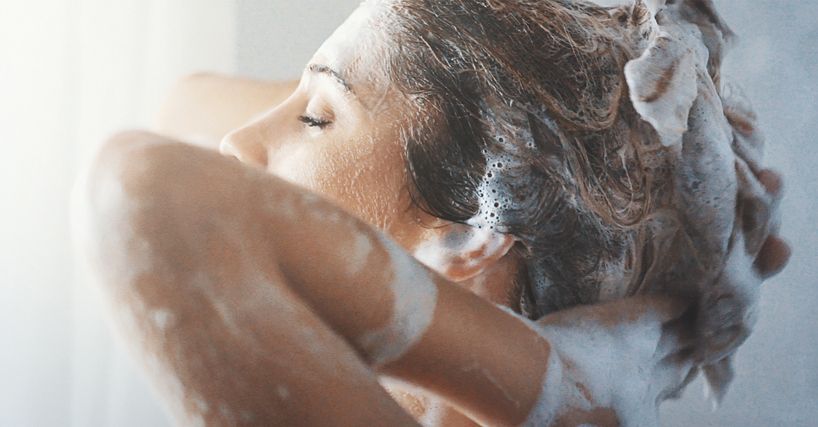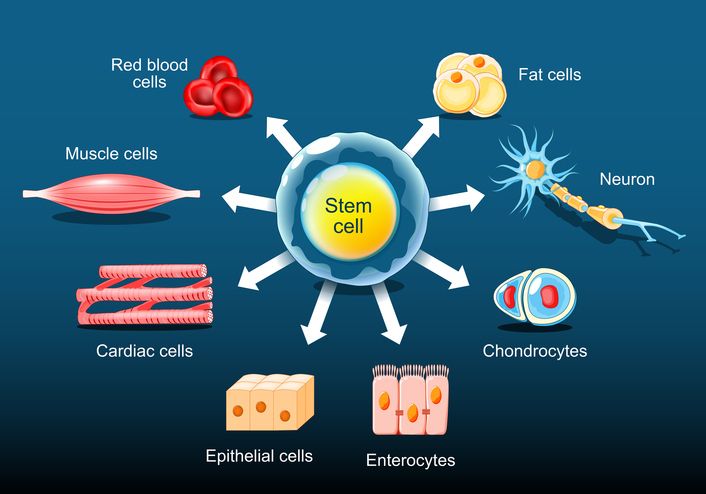Author: Natalie Ng|Updated: 6 June 2025
Some of the best ways to treat acne might already be sitting in your kitchen or garden. Tea tree oil helps manage acne causing bacteria, while aloe vera is soothing for irritated or sensitive skin. Green tea is another go-to—its antioxidants support skin health from the inside out. Herbal treatments for acne have been around for a long time. Calendula, turmeric, and neem leaf are a few well-known options with calming and anti inflammatory effects. You’ll also hear about chamomile, lavender, and holy basil as natural acne remedies, often used in alternative acne treatments. If you’ve been using conventional acne treatments like salicylic acid or benzoyl peroxide and still deal with breakouts, these natural options might be worth exploring. They’re gentler on the skin and may be a better fit for mild to moderate acne. Wondering which ones are actually worth trying? Keep going—we’ll break down 10 of the most effective herbal remedies that can help reduce acne and support clearer skin.

Acne Reduction Herbal Treatment 1: Tea Tree Oil
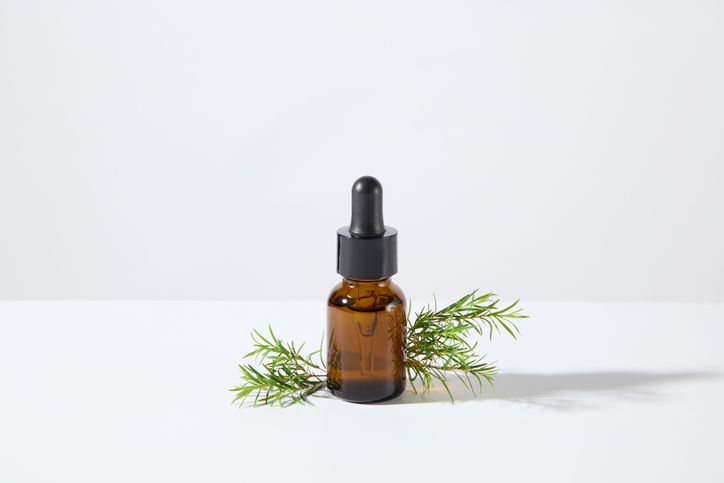
Importance of tea tree oil in acne treatment
Tea tree oil is one of the most widely used herbal treatments for acne. It comes from the leaves of the Melaleuca alternifolia plant and is known for its antibacterial properties, which help manage acne causing bacteria that build up in clogged pores. These properties make it a helpful option for treating mild to moderate acne vulgaris and managing acne lesions, especially for those who experience irritation from conventional acne treatments like benzoyl peroxide or salicylic acid.
It also offers anti inflammatory effects, helping to reduce redness and swelling in active breakouts. This makes it a suitable choice for people with sensitive skin or those looking for natural acne treatments that support skin health without causing dryness or skin peeling. For many, tea tree oil has become a key part of managing acne naturally, especially as an alternative to over the counter topical treatments.
How to use tea tree oil on skin
Because tea tree oil is a highly concentrated essential oil, it should always be diluted before applying it to the skin. Using it directly without dilution may cause irritation or worsen inflammation, especially on sensitive or inflamed areas.
To use it safely:
• Mix 1 to 2 drops of tea tree oil with a teaspoon of carrier oil, such as jojoba or olive oil
• Apply the mixture to clean skin using a cotton swab or fingertip
• Start with one application per day
• If your skin reacts well, increase to twice daily
With regular use, tea tree oil can help reduce acne breakouts, soothe inflammatory lesions, and support clearer, healthier skin as part of your overall acne treatment routine.

Acne Reduction Herbal Treatment 2: Aloe Vera
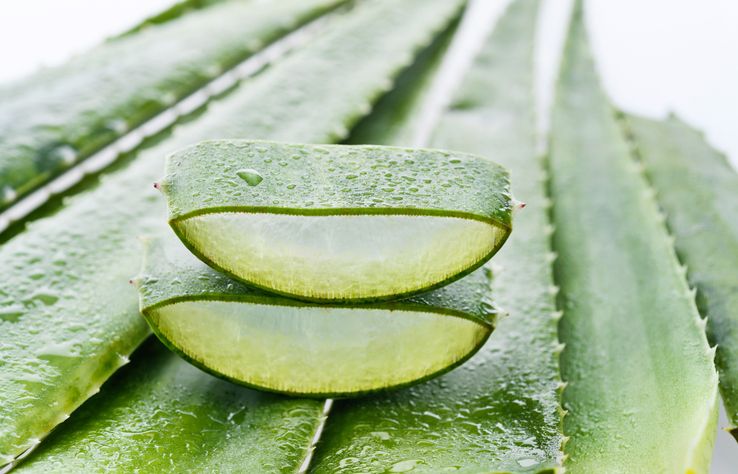
Benefits of aloe vera in acne treatment
Aloe vera is one of the most well-known herbal remedies for soothing irritated skin, especially for those managing acne. It comes from the inner gel of the aloe plant, which contains a mix of vitamins, enzymes, and anti inflammatory compounds that support skin healing. Its cooling effect helps reduce redness, while its antibacterial properties assist in calming acne causing bacteria that trigger breakouts.
This natural remedy is especially useful for people with sensitive skin, as it offers a gentle approach without the harsh side effects of conventional treatments. Aloe vera can also support the healing of acne lesions and improve the appearance of post-acne marks, helping to restore overall skin health. Many people use aloe vera to complement their existing acne treatment routine, especially when dealing with mild to moderate acne or skin irritation caused by over the counter products.
How to apply aloe vera for best results
To use aloe vera safely and effectively, it’s best to extract the gel directly from the plant. Start by cutting a thick aloe leaf at the base, slice it open lengthwise, and scoop out the clear gel from inside. Always begin with a patch test on your inner arm, leaving the gel on for at least three minutes to check for any reaction.
Once cleared, apply the fresh gel directly to clean skin. Gently massage it into acne-prone areas and allow it to absorb for around 15 minutes before rinsing off with cool water. For daily acne care, aloe vera gel can be used twice a day—once in the morning to reduce redness and once at night to help fight acne causing bacteria. It can also be combined with other natural ingredients such as clay or tea tree oil for deeper treatment, and used as an overnight mask to support healing and reduce the appearance of acne scars.
Read More
Book Now to Experience
Acne Treatment
1 Minute Self-Registration
Date should not be before minimal date

Acne Reduction Herbal Treatment 3: Neem Leaf Extract

Importance of neem in treating acne
Neem has been used in Ayurvedic medicine for centuries as a trusted remedy for various skin conditions, including acne. Its strength lies in a natural combination of antibacterial, antifungal, and anti inflammatory compounds that help reduce the presence of acne causing bacteria and calm inflamed breakouts. This makes neem especially useful in treating moderate acne and preventing the development of new lesions.
Neem also supports skin purification and helps regulate sebum production, which can reduce clogged pores and the buildup of dead skin cells. Because of its strong cleansing effect, neem is often used as part of alternative acne treatments by those seeking herbal remedies in place of more aggressive conventional acne treatments like oral antibiotics or topical benzoyl peroxide. It’s especially beneficial for skin types that react poorly to chemical-based products.
How to apply neem for acne treatment
There are several ways to incorporate neem into your skincare routine, each offering its own benefit depending on the form you choose. Before applying any neem-based preparation, perform a patch test to make sure your skin tolerates it well.
• Mix 2 to 3 drops of neem oil with a tablespoon of aloe vera gel to create a soothing spot treatment. This is helpful for calming inflamed or swollen acne lesions.
• Grind fresh or dried neem leaves with a small amount of water to make a purifying paste. Apply it as a face mask once or twice a week to help clear up active breakouts.
• Add neem powder to your usual cleanser for daily antimicrobial support. This method is convenient for people who prefer not to change their skincare routine too much.
• Boil neem leaves in water and let it cool to make a natural toner. Use a cotton pad to apply it after cleansing, especially on areas prone to oil buildup.

Acne Reduction Herbal Treatment 4: Green Tea
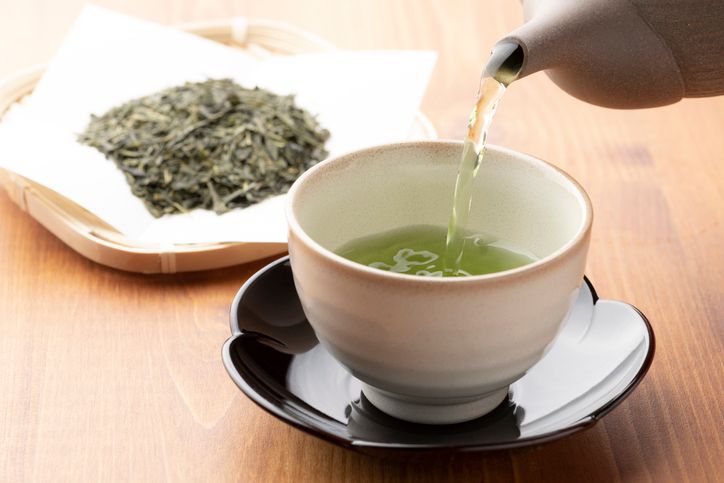
Importance of green tea in acne management
Green tea is widely known for its antioxidant content, especially catechins, which offer powerful benefits for both internal health and skin. As a natural acne treatment, green tea helps reduce inflammation, fights acne causing bacteria, and regulates excess oil that contributes to clogged pores and breakouts. These qualities make it especially useful for those managing mild to moderate acne vulgaris or looking for complementary therapies to support clearer skin.
Unlike conventional topical treatments, green tea is gentle and can be applied directly to the skin without causing irritation. Its anti inflammatory properties also help soothe redness, calm active acne lesions, and support the skin’s natural repair process. Whether used topically or as a beverage, green tea offers a mild but effective approach to managing acne.
How to use green tea for acne
You can apply green tea to your skin in several simple ways, depending on your routine and skin needs. Start by steeping 2 to 3 green tea bags in hot water for about 3 to 4 minutes. Allow the tea to cool completely before applying it to clean skin with a cotton pad or transferring it into a spray bottle.
Green tea can be used:
• As a daily toner after cleansing, helping to reduce oil buildup and tighten pores
• Mixed with honey or clay to form a soothing face mask used 1 to 2 times per week
• Stored in the refrigerator for up to 48 hours to keep it fresh for repeat use
You can also drink 2 to 3 cups of green tea a day to support your skin from the inside out. Its antioxidants help regulate your body’s inflammatory response, which may lower the frequency and severity of breakouts.
Book Now to Experience
Acne Treatment
1 Minute Self-Registration
Date should not be before minimal date

Acne Reduction Herbal Treatment 5: Calendula
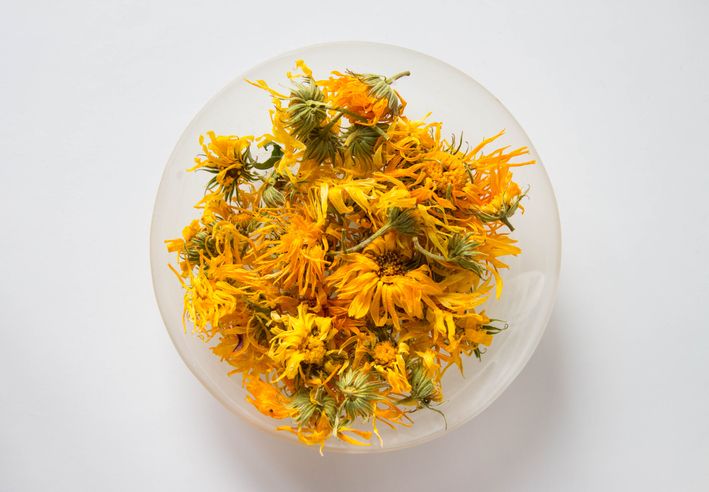
Importance of calendula in reducing acne-related inflammation
Calendula, often called marigold, is a flower known for its ability to calm inflamed skin. Its gentle anti inflammatory and antimicrobial properties make it a suitable option for acne management, especially for people with sensitive skin or those prone to irritation from conventional acne treatments. Calendula supports the skin’s healing process by reducing swelling, redness, and discomfort around acne lesions without clogging pores or triggering further breakouts.
It is especially helpful in treating mild acne and in soothing skin after flare-ups. By supporting the repair of the skin barrier and calming irritated areas, calendula works well as a complementary part of a natural acne treatment routine.
How to use calendula for acne care
Calendula can be applied to the skin in several forms. Each method serves a slightly different purpose depending on the severity and location of your breakouts.
• Calendula tea face wash:
Steep 2 tablespoons of dried calendula petals in 2 cups of hot water for 15 minutes. Let it cool, then strain and store in a clean container. Apply the cooled liquid to your face using a cotton pad or use it as a gentle rinse morning and night. This can help reduce inflammation and cleanse the skin without causing dryness.
• Calendula spot treatment:
For active breakouts, steep 2 tablespoons of dried petals in 1/4 cup of hot water. Let it cool and apply directly to blemishes using a clean cotton swab. This method can help reduce redness and calm skin irritation when used twice daily.
• Calendula-infused oil:
Fill a clean jar with dried calendula flowers and cover them with a carrier oil such as jojoba. Let the mixture sit in a warm, dark place for 4 to 6 weeks. Shake it gently every few days. Once ready, strain and store in a dark glass bottle. Apply a small amount to acne-prone areas at night to nourish the skin while keeping inflammation under control.

Acne Reduction Herbal Treatment 6: Witch Hazel
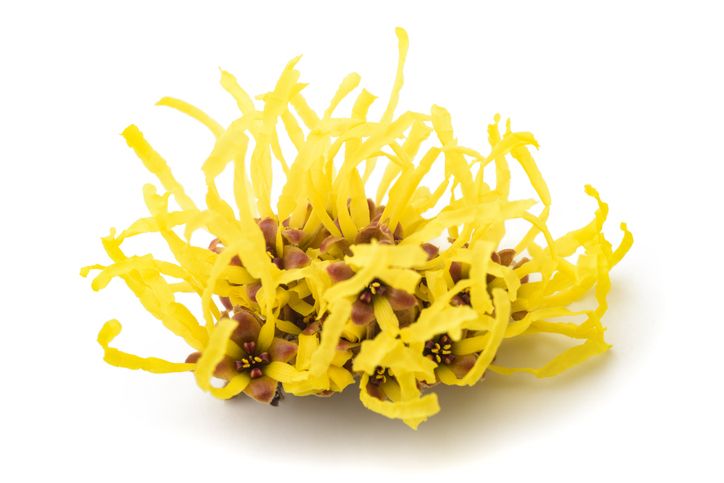
Importance of witch hazel in clearing pores and reducing oil
Witch hazel is a natural astringent commonly used in alternative treatments for acne. Sourced from the bark and leaves of the Hamamelis plant, it helps tighten pores, reduce excess oil, and prevent buildup that can lead to clogged pores and acne breakouts. This makes it especially helpful for managing mild to moderate acne and for oily or combination skin types.
Witch hazel also has mild anti inflammatory properties, which can help soothe skin irritation around acne lesions. Unlike some over the counter products that cause dryness or peeling, witch hazel provides a lighter option for daily care. It's often used as part of acne management routines where users want to avoid harsher chemical-based products.
How to apply witch hazel to support acne treatment
To use witch hazel effectively, start by choosing an alcohol-free version to avoid unnecessary dryness or irritation. Apply it after cleansing to help remove any leftover oil, tighten pores, and refresh the skin.
Here’s a simple application method:
• After washing your face, apply witch hazel with a cotton pad
• Gently swipe across areas prone to breakouts, such as the forehead, nose, chin, and jawline
• Use morning and night for regular care
• For added calming effect, mix equal parts witch hazel and rose water to make a gentle toner
For spot treatment, apply undiluted witch hazel directly to affected areas using a cotton swab. This can help calm inflammation and reduce oil without over-drying. Witch hazel can also be used throughout the day as needed, especially in humid weather or after sweating, to keep pores clear and skin feeling refreshed.
Book Now to Experience
Acne Treatment
1 Minute Self-Registration
Date should not be before minimal date

Acne Reduction Herbal Treatment 7: Turmeric
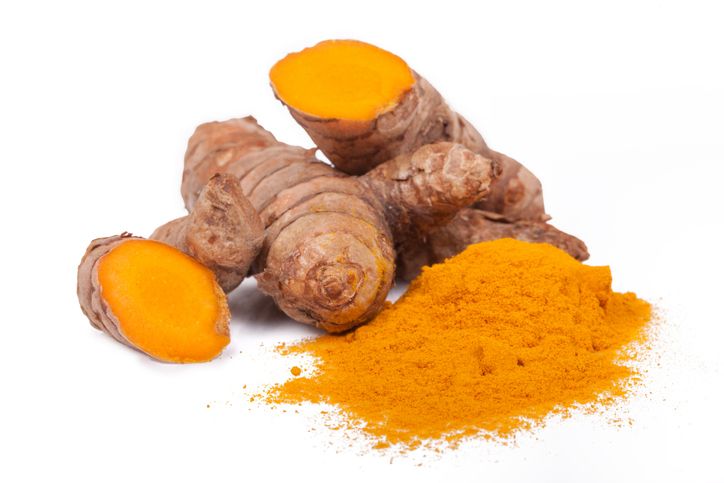
Importance of turmeric in calming inflamed acne
Turmeric has long been used in traditional herbal medicine for its strong anti inflammatory and antimicrobial effects. Its active compound, curcumin, plays a key role in reducing redness and swelling associated with acne. By targeting inflammatory responses in the skin, turmeric helps relieve discomfort from inflamed breakouts and supports faster healing.
Beyond inflammation control, turmeric also helps regulate sebum production, reducing excess oil that can lead to clogged pores. It’s often used in natural acne treatments to address both active acne and post-acne marks, particularly when users want to avoid the side effects of conventional topical treatments like tretinoin cream or salicylic acid. Its antioxidant properties also help protect the skin from damage caused by environmental stress and acne-related inflammation.
How to use turmeric in acne care
Turmeric can be used in different ways, depending on your skin type and goals. It’s most commonly applied as a paste or mask and used a few times per week to avoid irritation or staining.
To prepare a simple turmeric mask:
• Mix 1 teaspoon of turmeric powder with 2 teaspoons of honey and a splash of milk or water
• Apply the mixture to clean skin, focusing on acne-prone areas
• Leave it on for 15 to 20 minutes, then rinse off with lukewarm water
For a more targeted treatment, turmeric can be combined with yogurt for light exfoliation or with aloe vera gel to enhance soothing effects. Apply 2 to 3 times weekly as part of your acne treatment routine.
While turmeric is generally safe, its strong yellow pigment can stain fabrics and sometimes leave a temporary tint on the skin. Start with short applications and always rinse thoroughly.

Acne Reduction Herbal Treatment 8: Lavender
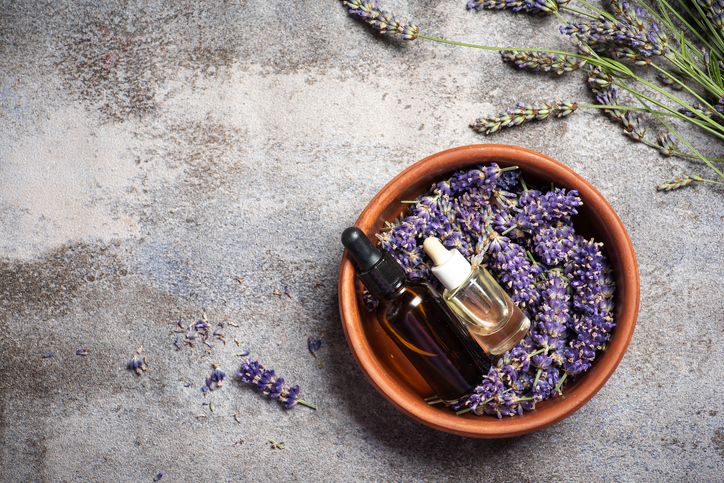
Importance of lavender in balancing acne-prone skin
Lavender is more than just a calming scent—it also plays a valuable role in acne management. Its natural antibacterial properties help reduce acne causing bacteria on the skin, while its anti inflammatory effects help calm redness and irritation. Lavender is particularly helpful for people dealing with stress-related breakouts, as it supports both skin balance and emotional well-being.
What makes lavender especially useful in natural acne treatments is its ability to regulate oil production without stripping the skin. This makes it a gentle alternative for those with sensitive skin who may not tolerate conventional acne treatments like benzoyl peroxide. Lavender is also a good choice for mild acne or as part of a supportive skincare routine alongside other herbal remedies.
How to use lavender for clearer skin
Lavender essential oil can be used in multiple ways, but it must always be diluted before applying to the skin. Pure essential oil is too strong to apply directly and may cause irritation.
To apply lavender safely:
• Add 1 drop of lavender essential oil to 1 teaspoon of a carrier oil, such as jojoba or coconut oil
• Mix well and apply to clean skin using a cotton swab or fingertip, focusing on active breakouts or oily areas
• Use once daily, preferably in the evening, to support skin recovery overnight
For a soothing steam treatment, add 3 to 4 drops of lavender oil to a bowl of hot water. Cover your head with a towel and let the steam reach your skin for 5 to 7 minutes. This can help open pores and allow the antibacterial effects of lavender to reach deeper into the skin.
Book Now to Experience
Acne Treatment
1 Minute Self-Registration
Date should not be before minimal date

Acne Reduction Herbal Treatment 9: Chamomile

Importance of chamomile in soothing acne and supporting skin repair
Chamomile is a gentle herb known for its calming and anti inflammatory properties, making it a helpful option for acne-prone skin, especially when inflammation and redness are present. It contains natural antioxidants that help repair damaged skin cells and reduce the visual effects of acne lesions. Because of its mild nature, chamomile is often used in alternative acne treatments for those with sensitive skin or for calming skin irritation caused by more aggressive products.
Chamomile can also be beneficial when acne flare-ups are linked to stress. Its relaxing effects can support the skin’s recovery while offering a more holistic approach to acne management. Unlike harsher conventional treatments, chamomile works without causing peeling or dryness, making it suitable for daily use.
How to use chamomile in acne routines
Chamomile can be used in several different forms depending on the level of treatment needed. Whether in tea, oil, or dried form, its natural compounds help reduce acne-related discomfort and improve overall skin health.
Ways to apply chamomile for acne care:
• Steep 2 to 3 chamomile tea bags in hot water for 5 minutes, then let the tea cool completely. Use a cotton pad to apply the tea to clean skin as a calming toner.
• Mix dried chamomile flowers with honey to create a gentle mask. Apply to clean skin and leave on for 15 minutes before rinsing.
• Place cooled chamomile tea bags directly on inflamed areas for 10 minutes to help reduce swelling and redness.
• Add a few drops of chamomile essential oil to your moisturizer to enhance its calming effects. Always perform a patch test first.

Acne Reduction Herbal Treatment 10: Holy Basil
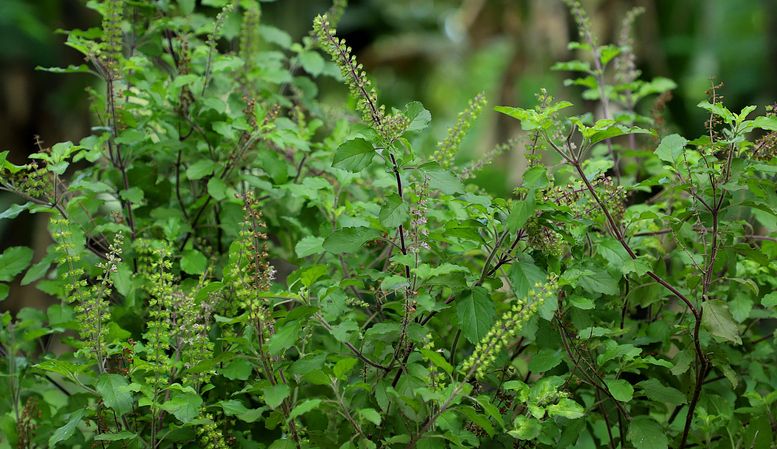
Importance of holy basil in purifying acne-prone skin
Holy basil, also known as tulsi, has a long-standing place in Ayurvedic medicine as a natural purifier. Its antibacterial properties help reduce acne causing bacteria on the skin’s surface, while its anti inflammatory compounds work to calm existing breakouts. For those dealing with recurring or stress-triggered acne, holy basil offers a plant-based solution that supports both skin health and internal balance.
This herb also helps manage excess oil by supporting the regulation of sebum production—an important factor when acne occurs around the T-zone or in areas where hair follicles are often blocked. It’s especially useful for people looking for herbal medicines to complement their acne treatment routine without the side effects of oral antibiotics or stronger topical treatments.
How to use holy basil for clearer skin
Holy basil can be used as a skin rinse or toner, and is most effective when applied to clean skin. Start with dried basil leaves or a high-quality basil powder to prepare your treatment.
Here’s a simple method:
• Steep 2 tablespoons of dried holy basil leaves in 1 cup of hot water for 10 minutes
• Let the mixture cool completely, then strain it
• Apply the cooled liquid to your face using a clean cotton ball, focusing on oily or acne-prone areas
• Leave it on for 15 minutes before rinsing with cool water
This treatment can be used twice daily, morning and evening. Its antibacterial effects help reduce breakouts, while the calming properties reduce irritation and redness.

Support Herbal Acne Remedies with Professional Treatment for Clearer Skin
Herbal treatments for acne—such as tea tree oil, neem leaf extract, and calendula—offer natural ways to soothe inflammation and fight acne causing bacteria. But for those dealing with recurring or more severe acne, combining your skincare routine with professional treatment may enhance your results. New Beauty’s Acne Treatment is a non-invasive, in-clinic procedure designed to unclog pores, balance oil, and support the effects of natural acne treatments.
What Is the Acne Treatment?
The Acne Treatment is a multi-step solution that works deep into the skin layers using dual spiral suction and a hydrating serum infusion. It targets acne at its source by removing dead skin cells, clearing blocked follicles, and calming skin inflammation. The treatment is designed for acne-prone skin and addresses issues like blackheads, enlarged pores, acne scars, and oily skin.
By promoting better sebum control and reducing surface buildup, it helps prevent future breakouts and allows your skin to better absorb topical herbal remedies such as aloe vera gel, witch hazel toner, or turmeric masks.
How It Works
A skincare professional begins with a consultation and patch test to ensure skin compatibility.
Next, a handpiece with dual spiral suction gently exfoliates dead skin cells and removes excess oil from clogged pores. This clears the path for deeper hydration and calms inflammation from active acne.
Finally, a medical-grade hydrating serum is infused into the skin. This helps balance oil production, soothe irritated areas, and stimulate collagen—supporting skin repair and helping fade post-acne marks.
Why Combine It with Herbal Acne Treatments?
If you're already using natural remedies like green tea toner or chamomile masks, this treatment can help prepare your skin for better absorption. By keeping your pores clean and controlling excess oil, it makes it easier for herbal treatments to do their job.
Pairing both approaches may help:
• Reduce breakout frequency more effectively
• Improve texture and fade post-acne scars faster
• Maintain skin balance without needing strong topical medications
• Support long-term acne management without overloading the skin
Benefits of the Acne Treatment
• Non-invasive and suitable for acne-prone or sensitive skin
• No recovery time needed—return to daily routine immediately
• Helps balance sebum levels and reduce acne inflammation
• Complements both conventional and natural acne treatment routines
Already seeing progress with herbal treatments for acne? Strengthen those results with professional care.
Book your consultation for the Acne Treatment today and take the next step toward clearer, balanced skin.
New Beauty's Acne TreatmentBook Now to Experience
Acne Treatment
1 Minute Self-Registration
Date should not be before minimal date
FAQ
1. Can herbal treatments for acne help with hormonal acne?
Yes, some herbal remedies can support hormonal balance and reduce breakouts caused by fluctuating hormones. For example, herbs like spearmint (when consumed as tea) may help reduce androgen levels, which can contribute to hormonal acne. While herbal treatments won’t replace medical options for severe hormonal imbalances, they can be a useful part of acne management for mild to moderate symptoms. It's still best to speak with a healthcare professional if your breakouts are linked to your menstrual cycle or other hormonal changes.
2. What are the best herbal remedies for acne scars?
Certain herbal ingredients can help fade post-acne marks over time. Aloe vera gel, turmeric, and calendula are popular for reducing redness and improving overall skin tone. These herbs support healing and collagen production, which may gradually improve the appearance of acne scars. For deeper or pitted scars, you may still need professional treatments, but herbal remedies can help support your skin’s natural repair process.
3. Are herbal acne treatments safe for people with sensitive skin?
Most herbal acne remedies are gentle and well-tolerated by sensitive skin types, especially when compared to conventional acne treatments like salicylic acid or benzoyl peroxide. That said, skin reactions can still occur, especially with concentrated essential oils like tea tree or lavender. Always patch test first and dilute essential oils properly with carrier oils. Natural doesn’t always mean irritation-free, so start slow and monitor how your skin reacts.
4. Can drinking herbal teas improve acne?
Yes, certain herbal teas can support clearer skin from the inside out. Green tea, spearmint tea, and dandelion root tea are known for their antioxidant and anti inflammatory properties, which can help regulate sebum production and reduce acne causing bacteria. Drinking green tea regularly has also been linked to improved skin clarity, making it a useful complementary therapy in your acne treatment routine.
5. Do herbal medicines work for severe acne or acne vulgaris?
Herbal medicines can help reduce inflammation, control oil production, and support healing—but they may not be strong enough alone for severe acne or widespread acne vulgaris. In these cases, combining herbal remedies with other acne treatments—like professional procedures or guidance from a dermatologist—can offer better results. Herbal treatments are best used as part of a broader acne management plan that may include dietary changes, topical treatments, and regular skincare.
Recommended Articles
COPYRIGHT© NEW BEAUTY MANAGEMENT LIMITED 2025. ALL RIGHT RESERVED.

